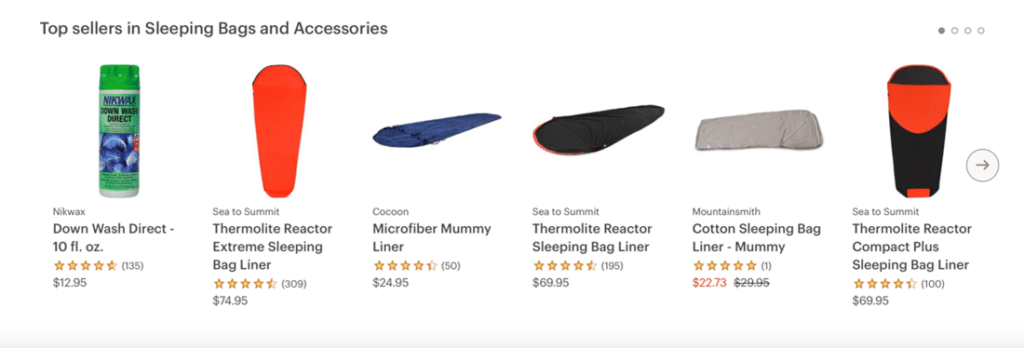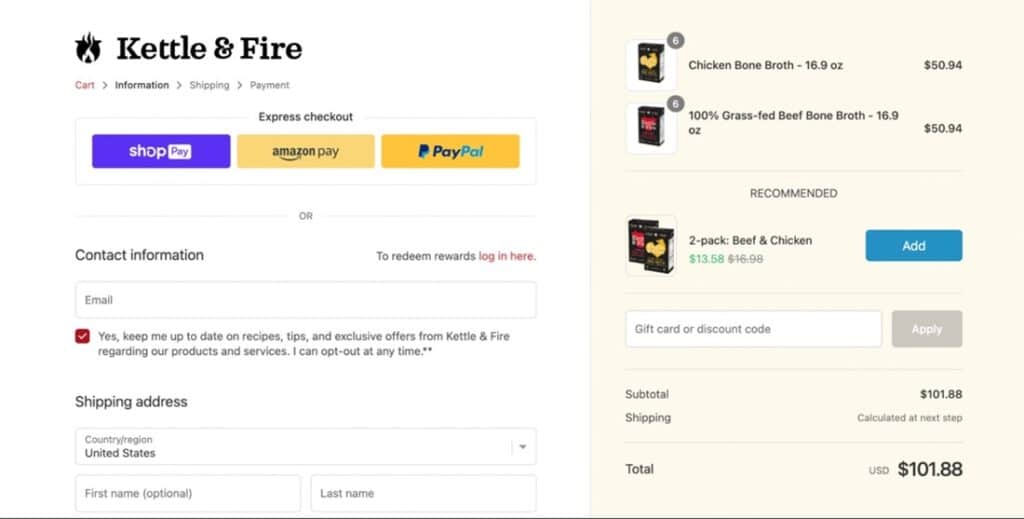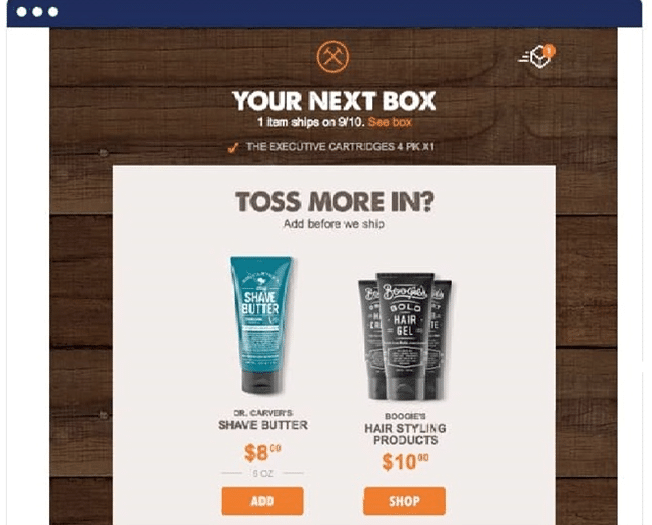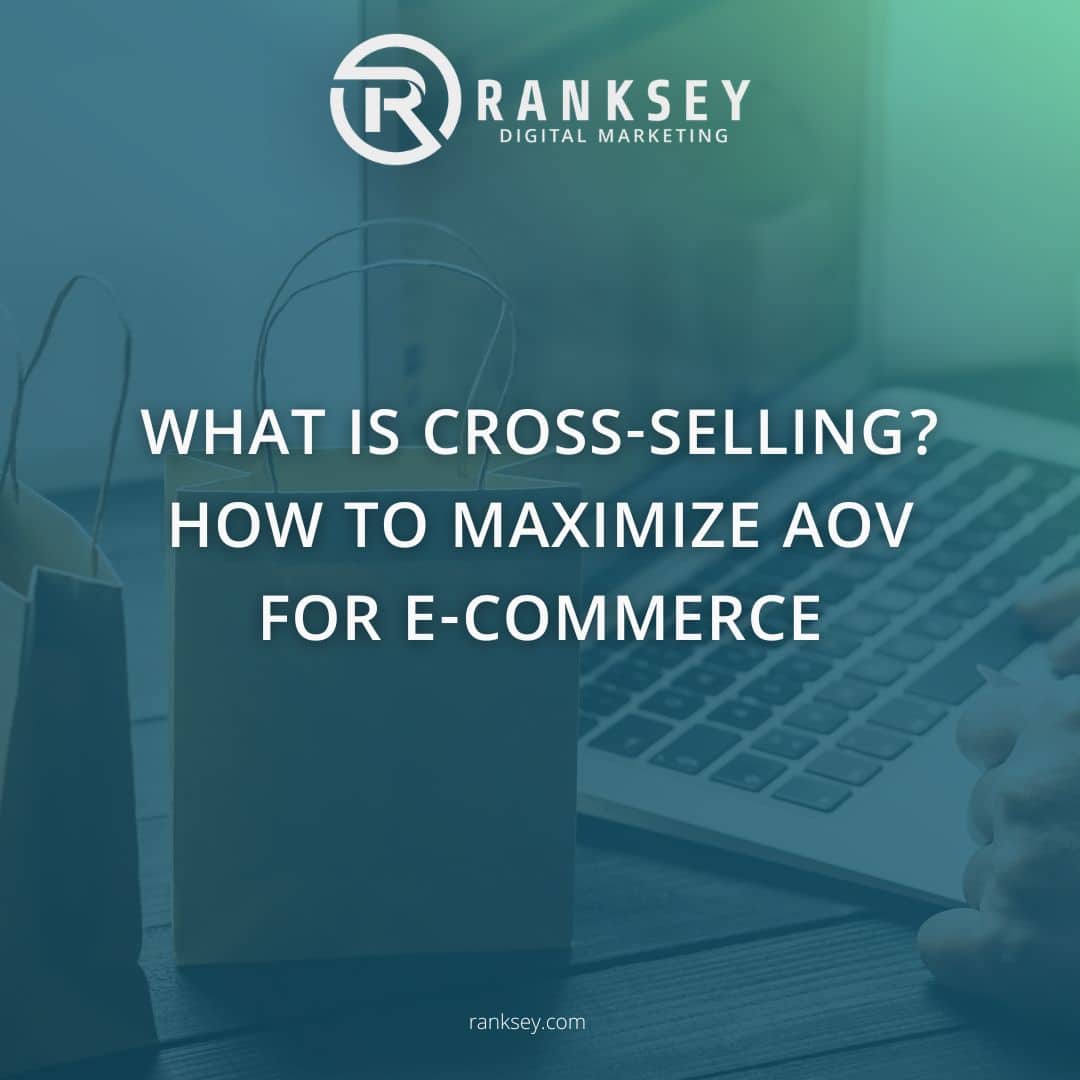Many e-commerce brands ask, “What is cross-selling?” and how it can benefit their bottom line. Cross-selling is an effective sales strategy used to convince customers to purchase more than their original purchase. From boosting average order value to increasing customer lifetime value, implementing cross-selling strategies for online stores has many benefits.
Below is a guide on e-commerce cross-selling with strategy examples to help you implement successful cross-sells and avoid pushing customers away.
What is cross-selling?
So, what is cross-selling? Cross-selling is a sales strategy that suggests or recommends additional products to customers who are actively shopping or have recently purchased. Cross-selling aims to increase a customer’s order value or influence them to buy additional products later by offering related items they may find valuable.
Cross-Sell vs. Upsell: What’s the Difference?
Now that you know the answer to “What is cross-selling?”, it’s critical to know the difference between a cross-sell vs. upsell. Upselling and cross-selling are two commonly confused marketing tactics. Cross-selling focuses on selling additional products while upselling focuses on influencing customers to upgrade their purchase.
Examples of Upselling in E-Commerce
An e-commerce upselling example is when a customer buys a new smart watch and is prompted to upgrade to the same smart watch, but a more expensive version prior to reaching checkout. The pop-up will showcase the same smart watch the customer is buying, but it’s bigger, has a longer battery life, and offers more valuable features. The goal of upselling is to showcase the value of the same higher price point product to potential customers, so they spend more and feel it’s worth their investment.
Examples of Cross-Selling in E-Commerce
An e-commerce cross-selling example is offering smart watch accessories with a customer’s smart watch purchase, such as lightning-speed chargers and repair warranties. Cross-selling aims to showcase the value of complementary products for a customer’s original purchase.
Why Cross-Selling is Crucial for E-Commerce Brands
Improving average order value may seem obvious for e-commerce brands, but many fail to understand the significance of cross-selling strategies or how to cross-sell successfully. If you’re a small e-commerce brand with a large customer base, the results of successful cross-selling can be significant. According to McKinsey & Company, cross-selling techniques combined with category penetration lead to a 20% increase in sales and a 30% increase in profits.
Some benefits of using cross-selling strategies in e-commerce are:
- Increasing average order value — improves customer lifetime value
- Strengthening customer satisfaction —supports customer retention and builds brand trust
- Increasing revenue — generates more transactions and profits
- Cross-promoting products — educates consumers of other valuable products they might not be aware they need
E-commerce cross-selling maximizes the value of each customer order, which can significantly benefit your bottom line.
Examples of Cross-Selling Strategies for E-Commerce
Now that you know the answer to, “What cross-selling?”, and how it impacts the bottom line for e-commerce brands, below are some strategies on how to cross-sell effectively.
Recommended Product Listings for Cross-Promotion and Customer Education
A common e-commerce cross-selling strategy is displaying recommended products. On a product page, online stores can add a section to show common accessories or other commonly purchased items.
Here’s an e-commerce cross-selling example of recommended products from REI:

REI’s sleeping bag product page displays a section with recommended sleeping bag accessories at the bottom of the page. Customers may not know they need these accessories or that they exist, so they are cross-selling them by educating their consumers on these products, while cross-promoting them. Since these accessories complement the sleeping bags they are browsing through or buying, customers may be more inclined to purchase them. Displaying recommended products based on your customer’s shopping behavior is an effective way to cross-sell specific products that will be valuable to your customers.
Last-Minute Checkout Offers to Encourage Repeat Customers and Build Brand Trust
Another e-commerce cross-selling strategy is last-minute checkout offers. These sudden deals showcase how customers can save money on their orders through a recommended discount offer.
Here’s an e-commerce cross-selling example of a last-minute checkout offer from Kettle and Fire:

The above image shows a cart checkout with a customer buying multiple single-pack soup broths. Kettle & Fire is cross-selling their products by recommending a two-pack soup broth bundle to save this customer money before checking out. This cross-selling strategy shows the value of buying the same products for less money in a bundle. Since Kettle & Fire is transparent about a valuable discount before a customer completes their transaction, it builds brand trust and encourages their customers to buy again from them in the future.
Repeat customers provide the best return on investment because they are more likely to purchase from you again than new customers who don’t know your brand yet. Acquiring new customers also costs more than retaining existing ones, so valuable new discounts are a great way to strengthen customer retention. Last-minute checkout offers are beneficial cross-selling strategies to increase average order value and customer lifetime value.
Learn how to increase customer lifetime value in e-commerce on Ranksey’s podcast, “E-Commerce Secrets to Scale”.
Personalized Email Marketing for New and Repeat Customers
Another way to cross-sell products is by promoting post-purchase cross-sells. Online stores can achieve post-purchase cross-sells through e-commerce email marketing.
For new customers who are automatically added to an email list after a transaction, you can send them emails recommending accessories or other products based on what they recently purchased. For repeat customers who recently bought but are unsubscribed from promotional emails, you can include recommended products in order confirmation emails and even throw in a discount to get that repeat purchase.
Here’s an e-commerce cross-selling example of personalized email marketing from Dollar Shave Club:

This image shows a personalized order confirmation email of shaving razors from Dollar Shave Club with recommended shaving products displayed below. The customer purchased a four-pack of razors and based on that unique order, Dollar Shave Club is cross-selling their shaving cream and hair styling products. Dollar Shave Club knows their customers shave with their products, so they cross-sell related items they know their customers will be interested in —like their Shave Butter that can help them avoid razor burn and bumps, which pairs perfectly with their razors.
When you send recommended product emails from a customer’s order or browsing history, you’re able to provide a personalized shopping experience. Shopping personalization is essential for e-commerce brands because it can increase customer engagement by showing customers products based on their exact interests and shopping behavior. When you cross-sell recommended products via email based on a customer’s personal order, it can increase customer engagement and customer lifetime value.
Learn how to scale e-commerce email marketing without burning out your list on Ranksey’s podcast, “E-Commerce Secrets to Scale”.
Strengthen Your E-Commerce Cross-Selling Strategy with Customer Value Optimization
Instead of pushing products onto your customers, focus on cross-selling valuable solutions that fulfill their exact needs. Taking advantage of e-commerce cross-selling strategies can increase transactions, repeat customers, and revenue.
When you take the time to understand your customers better, create relevant and targeted offers, and consider customer lifetime value a high priority, you can increase average order value and customer loyalty.
Now that you know the answer to “What is cross-selling?”, the next step is to ensure your cross-selling strategy is implemented successfully for your online store.
Learn how to strengthen your e-commerce cross-selling strategy with our customer value optimization services.



